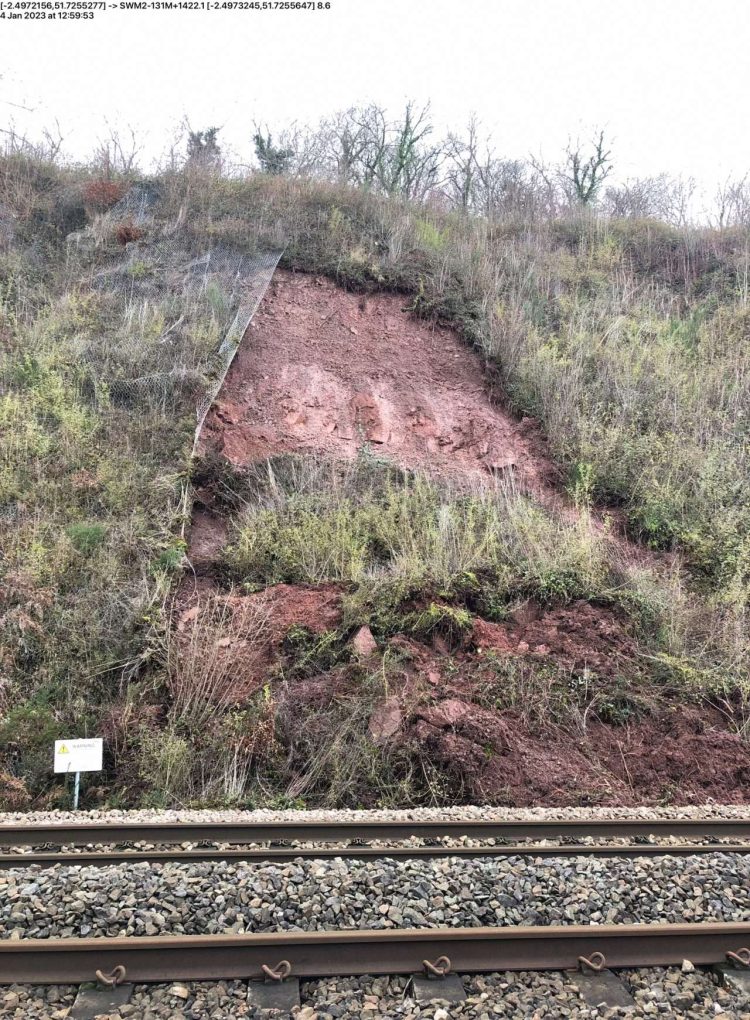Following a period of prolonged and heavy rain that caused a 100-tonne landslip near Purton, the railway line between Lydney and Gloucester on the Newport to Gloucester line was forced the close in early January.
The closure highlighted the need for Network Rail to continue its investment in the line to protect it from the impacts of climate change. On Wednesday, 4th January, a state-of-the-art slope monitoring system alerted Network Rail to the movement of the earth.

Over the next four days, rope access teams working around the clock descaled a 100ft cliff face by hand and removed a large amount of soil and rock from the tracks.
The heavy rainfall caused a culvert to collapse and four tonnes of ballast was washed away. Engineers carried out repairs to both the culvert and the ballast and installed concrete ‘legato blocks’ at the bottom of the slopes to prevent further debris from reaching the track.

Because of its exposed location, the section of the line alongside the Severn Estuary between Lydney and Gloucester is particularly vulnerable to landslips.
In 2021, Network Rail announced the Severn Estuary Resilience Programme, which is a £25m project to improve the resilience of this vital passenger and freight line by installing 27,000 square metres of a new rock-mesh system along a three-mile section of the line, including at the site of this recent landslip.

The project started last summer and will continue from Summer 2023, and will ensure this vital railway line is protected from the effects of climate change for generations to come.
Christopher Howchin, senior network delivery manager for Network Rail Wales & Borders, said: “I’d like to thank the team for their efforts to recover the line as quickly and safely as possible, especially during the latest period of industrial action, when our resources were limited.
“Landslips at this location are only going to become more frequent due to the increasing bad weather brought on by climate change, which is why we are investing millions of pounds to protect our railway from the impact. Our work on this line will reduce delays and disruption for passengers and our freight customers, ensuring this vital transport route can continue to serve communities for many years to come.”






Responses